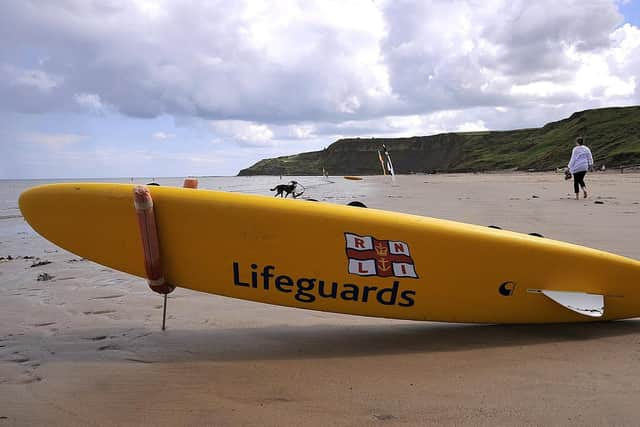Cayton Bay lifeguard single handedly rescues ten children and three adults from deep water
and live on Freeview channel 276
Bill Mullane, a Cayton Bay RNLI lifeguard, was monitoring the two large families who were swimming at the beach.
With the weather appearing calm, they entered the water on the south end of the beach to bodyboard.
Advertisement
Hide AdAdvertisement
Hide AdBy midday Bill noticed the family had swum to the outer reef, over 300m offshore.


He radioed his fellow Cayton Bay lifeguards to inform them that the families had drifted outside of the lifeguarded zone then swam out on the rescue board, where he found the group happy and content.
Although the onshore wind ensured there was no danger of the families drifting further out to sea, the charity's Cayton Bay team acted to prevent any incidents from occurring; the families were in deep water, which could cause fatigue.
Once Bill reached the group of 13, he informed them of the danger of swimming outside the red and yellow flags.
Advertisement
Hide AdAdvertisement
Hide AdWith ten of the casualties being under the age of 17, Bill made a game of the rescue, encouraging the families to form a human chain, with the leader holding onto Bill and the rescue board.
The RNLI team successfully returned the two families to shore, where they received medical checks.
With a majority of the casualties being children, the Cayton Bay lifeguards ensured that all were accounted for before giving the group some safety advice.
The incident occurred at 11.50am on Sunday July 11.
Cayton Bay’s senior RNLI lifeguard Dom Morris praised his team’s preventative actions: "Bill entered the water to prevent any incidents from happening, as the family had swum outside of the red and yellow flags. This meant we couldn’t monitor them.
Advertisement
Hide AdAdvertisement
Hide Ad"To stay safe at one of our lifeguarded beaches, you need to swim between the red and yellow flags.
"That way, one of our lifeguards will be about to help you if you get into any trouble in the zone."
For more safety information when visiting an RNLI lifeguarded beach, please visit: https://rnli.org/safety/beach-safety